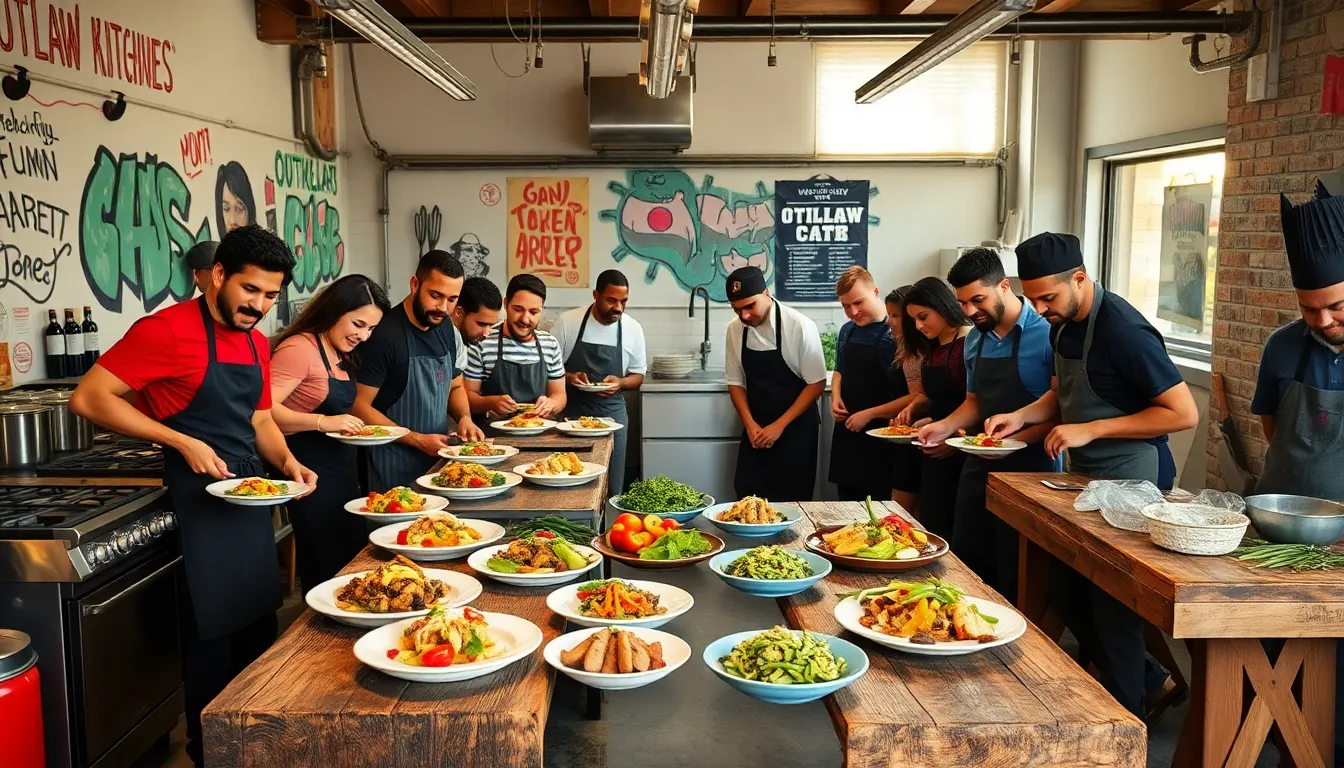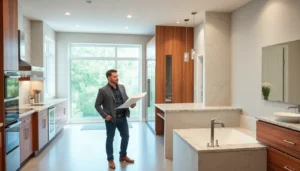Imagine cooking in a cozy garage while serving up mouthwatering dishes to eager patrons. It sounds a bit rebellious, doesn’t it? Welcome to the world of outlaw kitchens, where culinary creativity meets a dash of defiance. This growing movement isn’t just about good food: it’s a cultural phenomenon challenging traditional dining norms. Let’s jump into what makes these kitchens so special and why they’re turning heads in the culinary world.
Table of Contents
ToggleWhat Are Outlaw Kitchens?

Outlaw kitchens occupy a unique space within the culinary arena. These informal restaurants often operate outside the boundaries of traditional dining establishments. Think pop-up restaurants, side projects, or even secret gatherings where chefs can express their creativity without the constraints that come with conventional setups. In these kitchens, the spotlight is on innovation, community, and the zest for flavor.
The term “outlaw kitchen” itself evokes images of culinary rebels crafting masterpieces in non-traditional spaces, garages, backyards, or abandoned warehouses. These kitchens cater to adventurous eaters who crave authenticity and experience rather than a mere meal. This movement celebrates individuality, encouraging chefs to bring their unique spins on regional cuisine while rejecting the sterile environment of typical eateries.
The Origins of Outlaw Kitchens
The rise of outlaw kitchens can be traced back to the increasing demand for external dining experiences that challenge norms. Initially, they emerged as a response to high restaurant costs and a growing desire for unique, flavorful options outside traditional menus. In cities like Los Angeles and New York, chefs began using kitchen spaces illegally to test their innovative recipes and showcase culinary prowess.
Cultural shifts also played a significant role. Social media exploded on the scene, connecting food enthusiasts and chefs. Platforms like Instagram allowed home cooks and unlicensed chefs to display their dishes, gaining followers and popularity almost overnight. This digital exposure attracted communities eager to experience the new and exciting without very costly.
Key Characteristics of Outlaw Kitchens
Outlaw kitchens may vary in operation, but they share some key characteristics that set them apart from traditional dining establishments.
The Role of Community and Collaboration
One of the defining features is community involvement. Many outlaw kitchens operate on a collaborative basis, allowing chefs to partner and share resources. This notion of culinary camaraderie fosters an environment where ideas flourish, encouraging creative experimentation with flavors and techniques.
Food swaps and events amplify this communal spirit, as chefs come together to share their culinary stories and dishes, placing value on social connection. The warm atmosphere they create transforms simple meals into events, drawing in diverse patrons.
Local Ingredients and Sustainability
Outlaw kitchens often emphasize sourcing local ingredients, aligning with a growing movement towards sustainability. By forming relationships with nearby farmers, these kitchens support the local economy while ensuring freshness in their dishes. Seasonal menus featuring unique flavors allow chefs to work directly with what the earth provides, encouraging a deeper connection to food and nature.
Challenges Faced by Outlaw Kitchens
While outlaw kitchens bring excitement to the culinary landscape, they’re not without their hurdles.
Legal Issues and Regulations
Operating outside the typical culinary framework often raises legal concerns. Many outlaw kitchens navigate a grey area concerning licensing. Without proper permits or inspections, these establishments risk fines and shutdowns. As a result, hiding operations in plain sight becomes a common strategy, leading to a cat-and-mouse game with health inspectors and regulatory bodies.
Navigating Health and Safety Standards
Alongside legal struggles are health and safety challenges. Maintaining food safety standards is imperative, and many outlaw kitchens lack access to resources that conventional restaurants rely on. So, the ongoing training of staff and adherence to best practices often pose a challenge, as these kitchens strive for excellence even though their unconventional setups.
The Future of Outlaw Kitchens
Looking ahead, outlaw kitchens seem poised to shape the culinary scene significantly.
Innovations and Trends to Watch
Innovations in technology and social media continue to drive the movement. Emerging platforms for food delivery and neighborhood dining are offering new avenues for these kitchens to connect with customers. Expect to see further integration of technology in operations, from cashless payments to virtual reservations. The future also hints at the possibility of rogue dining experiences flooding cities worldwide, a fun twist on traditional dining paradigms.
Impact on the Culinary Landscape
The overall impact is monumental. As outlaw kitchens push culinary boundaries, they challenge conventional restaurant norms, inspiring chefs and diners alike to think outside the box. This evolving dining model fosters appreciation for unique flavors and experiences, encouraging culinary exploration and innovation. The culinary world is notoriously fast-paced, and outlaw kitchens will undoubtedly keep it exciting.




